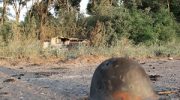The US is concerned about China's actions in the Indo-Pacific region.

Chairman of the Joint Chiefs of Staff of the US Armed Forces Mark Milley has ordered a comprehensive review of the US military's interactions with Chinese forces over the past five years amid growing concern over Beijing's more assertive behavior in the Indo-Pacific region. This is reported by CNN with reference to sources in the Pentagon.
Millie wants to get a detailed understanding of the types of interaction between the armed forces of the two countries, especially if such interaction can be considered “dangerous” or “unprofessional” due to the actions of Chinese aircraft or ships near US “military assets”. U.S. officials say the goal involves a clear overview of any changes in China's military activity patterns.
“China has been on the rise, both economically and militarily, for more than a decade. They became bolder in the Pacific Ocean. Maintaining open lines of communication and managing competition will reduce strategic risk. The US military is focused on modernization and readiness. Our network of partners and allies is a source of strength,” Milley said.
Interactions between the two countries' military forces are so delicate that incidents are often not publicized. For example, in June, a US C-130 transport plane flown by US special forces “collided” with a Chinese aircraft, but the Pentagon has not publicly acknowledged the incident.
The review reflects Milli's intense focus on ensuring that the US has full understanding of China's military potential and intentions.
Countering Beijing is a key strategic priority for Washington, and last month US Defense Secretary Lloyd Austin urged China not to engage in a series of violent, aggressive and dangerous actions that threaten stability in Asia, and pledged that the United States would support partners to counter any pressure .
“Countries in the Indo-Pacific region should not face political intimidation, economic coercion or harassment. China's actions threaten security, stability and prosperity in the Indo-Pacific region,” Austin said.
He listed a number of areas in which he said China is increasing pressure on its neighbors, including the operation of large numbers of military aircraft near Taiwan's airspace and the dangerous interception of patrol aircraft by U.S. allies.
In March, Admiral Philip Davidson, then head of US Indo-Pacific Command, called China “the greatest long-term strategic security threat of the 21st century”.
China says its military is defensive in nature.
“The development of China's national defense is aimed at meeting its legitimate security needs and promoting the growth of peace-loving forces in the world. China will never threaten any other country or seek spheres of influence,” Beijing says.
Also read: China demands US to cancel possible arms sales to Taiwan
Earlier it was reported that , that China is trying to influence American officials. Officials from the American states want to influence the central government of the country in order to incline it to a more friendly position towards Beijing.
See special topic: Confrontation between the USA and China The US Treasury Secretary criticized China's economic relations with the Russian Federation Yellen also recalled the global food crisis caused by the Russian Federation's war against Ukraine. The United States will not allow Russia or China to dominate the Middle East – Biden The American president has no intention of weakening the influence of the United States in the region. Blinken and the Chinese Foreign Minister declared their readiness for dialogue After the G20 summit, Blinken personally met with the Chinese Foreign Minister for the first time since last October. China called NATO's new strategic concept “irresponsible” According to a representative of the Chinese Foreign Ministry, NATO's new strategy misidentifies Beijing as a strategic challenge. Taiwan reports 29 Chinese planes in its air defense zone – Reuters China's latest “mission” included 17 fighter jets and six H-6 bombers, as well as radio electronic struggle




